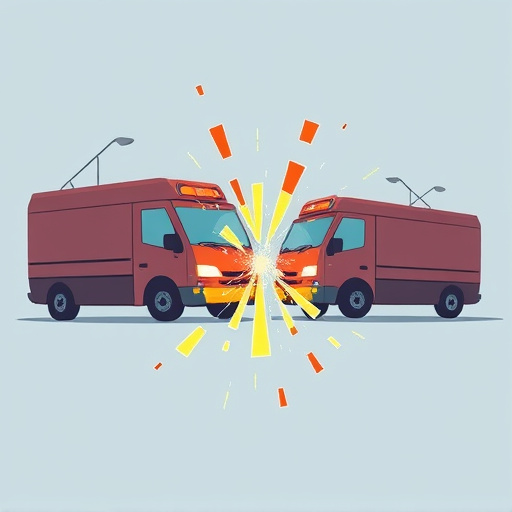Mercedes Sequential Turn Signal Repair: Water Intrusion Solutions

Water damage in Mercedes sequential turn signals causes malfunctions and corrosion over time. Repair…….
Welcome to an in-depth exploration of a critical aspect of automotive engineering and safety: Mercedes sequential turn signal repair. In today’s world, where vehicles are increasingly sophisticated and connected, understanding the intricacies of their signaling systems is paramount. This article aims to demystify the process, highlighting its significance, historical evolution, global impact, and future potential. By delving into these aspects, we empower automotive enthusiasts, mechanics, and industry professionals with valuable insights into this essential repair practice.
Definition:
Mercedes sequential turn signal repair refers to the process of fixing or replacing the electronic components that control the operation of a vehicle’s turn signals, ensuring they function sequentially (left turn signal followed by right) as mandated by road safety regulations. This system is an integral part of modern vehicles’ advanced driver-assistance systems (ADAS).
Core Components:
Historical Context:
The concept of sequential turn signals has been around for decades, evolving from simple mechanical switches to sophisticated electronic systems. Mercedes-Benz, known for its automotive innovation, played a pivotal role in refining this technology, integrating it into their vehicle models to enhance safety and driver convenience. Over time, global regulatory bodies have mandated the use of sequential turn signals across various vehicle types, leading to widespread adoption.
Significance:
Mercedes sequential turn signal repair has left a profound impact on the global automotive landscape. Its implementation varies across regions due to regional regulatory differences, but its influence is undeniable.
| Region | Regulatory Body | Sequential Turn Signal Mandate |
|---|---|---|
| North America | National Highway Traffic Safety Administration (NHTSA) | Mandatory for all new vehicles since 2018 |
| Europe | European Union (EU) | Implemented across the EU, with varying timelines based on vehicle category |
| Asia-Pacific | Various national governments | Mandatory in many countries, with Japan leading the way in advanced signal technology |
Trends Shaping the Industry:
The economic aspects of Mercedes sequential turn signal repair are multifaceted, impacting both the automotive industry and the broader economy.
Market Dynamics:
Investment Patterns:
Economic System Impact:
The field of Mercedes sequential turn signal repair is characterized by rapid technological progress, driving innovation and improved performance.
Key Advancements:
Impact and Future Potential:
Government policies and regulations play a pivotal role in shaping the landscape of Mercedes sequential turn signal repair and overall automotive safety.
Key Frameworks:
Influence on Development:
Despite its many advantages, Mercedes sequential turn signal repair faces challenges that require thoughtful solutions.
Main Challenges:
Proposed Solutions:
Real-world applications of Mercedes sequential turn signal repair offer valuable insights into its effectiveness and potential challenges.
Case Study 1: Mercedes-Benz E-Class (2020-present)
Mercedes implemented a sophisticated turn signal system in the E-Class, featuring adaptive signals that adjust based on traffic conditions. This case highlights the company’s commitment to advanced safety features and the potential for improved driver experience. However, it also underscores the need for specialized training due to the system’s complexity.
Lessons Learned:
Case Study 2: Japanese Electric Vehicle (EV) Models
Japanese automakers are renowned for their safety-focused design, and many EV models incorporate adaptive turn signals. These systems not only meet stringent Japanese regulations but also demonstrate the potential for energy-efficient signaling solutions. The success of these cases lies in combining advanced technology with robust regulatory frameworks.
Key Takeaways:
The future of Mercedes sequential turn signal repair is filled with promising possibilities, driven by emerging technologies and evolving regulatory landscapes.
Potential Growth Areas:
Emerging Trends:
Strategic Considerations:
In conclusion, Mercedes sequential turn signal repair is a critical aspect of modern automotive engineering, playing a pivotal role in enhancing road safety and driver convenience. From its historical evolution to its global impact, technological advancements, and regulatory frameworks, this field has come a long way. As we look ahead, the future holds immense potential for further revolutionizing vehicle signaling systems.
By addressing challenges, leveraging new technologies, and fostering collaboration between stakeholders, the automotive industry can continue to improve safety standards worldwide. The successful integration of Mercedes sequential turn signal repair is a testament to human ingenuity and our relentless pursuit of safer, smarter vehicles. As technology advances, we remain committed to exploring and understanding these complex systems, ensuring they contribute positively to our lives on the road.
Q1: Why are sequential turn signals important?
A: Sequential turn signals are crucial for vehicle safety as they provide clear and predictable indications of a driver’s intentions to other road users, reducing the risk of accidents.
Q2: Can I upgrade my vehicle’s turn signal system myself?
A: While some basic repairs may be possible for simpler systems, advanced turn signal systems require specialized training and tools. It’s recommended to seek professional assistance for upgrades or repairs to ensure safety and proper functionality.
Q3: How do environmental factors impact turn signal performance?
A: Environmental conditions like extreme temperatures can affect electronic components’ performance. Advanced systems use temperature sensors and adaptive algorithms to compensate, ensuring optimal signal operation in varying climates.
Q4: Are there any plans for universal standards for turn signals worldwide?
A: Global harmonization of regulations is an ongoing process. While there isn’t a single universal standard yet, efforts are being made to align requirements, facilitating the sharing of repair and maintenance practices across regions.
Q5: Can AI be used to predict turn signal failures?
A: Absolutely! Artificial Intelligence algorithms can analyze vast amounts of data to predict potential failures or malfunctions, enabling proactive maintenance and enhancing system reliability.

Water damage in Mercedes sequential turn signals causes malfunctions and corrosion over time. Repair…….

Mercedes vehicles feature advanced technology like the sequential turn signal system, crucial for sa…….

Damaged Mercedes sequential turn signals require professional repair for safety and functionality. T…….

Signal failures on vehicles, caused by faulty components and environmental factors, pose significant…….

Erratic or dysfunctional Mercedes sequential turn signals require immediate professional repair for…….

Mercedes sequential turn signal repair requires prompt attention to potential electrical issues. Che…….

Mercedes sequential turn signal repair involves identifying root causes beyond bulb replacement, suc…….

Signal failures in Mercedes due to aging parts, electrical damage, misalignment, or improper install…….

Flickering or intermittent Mercedes sequential turn signals are warning signs of potential issues, i…….

Diagnose and repair common Mercedes sequential turn signal issues like flickering signals (faulty wi…….